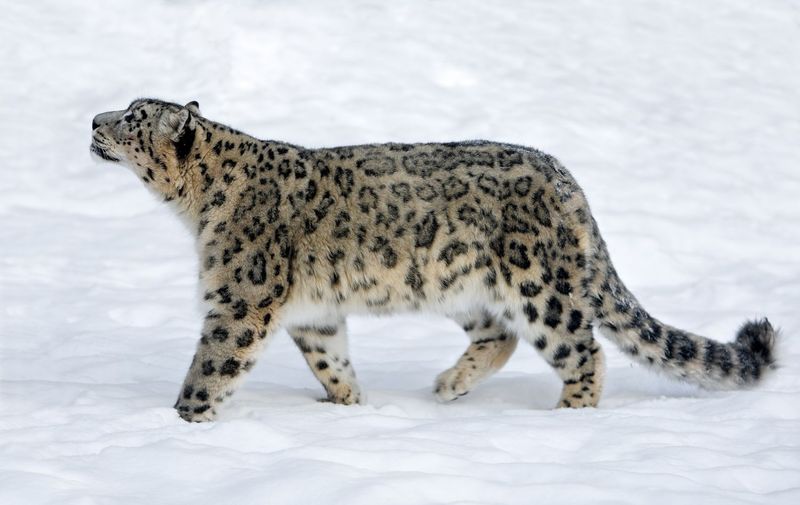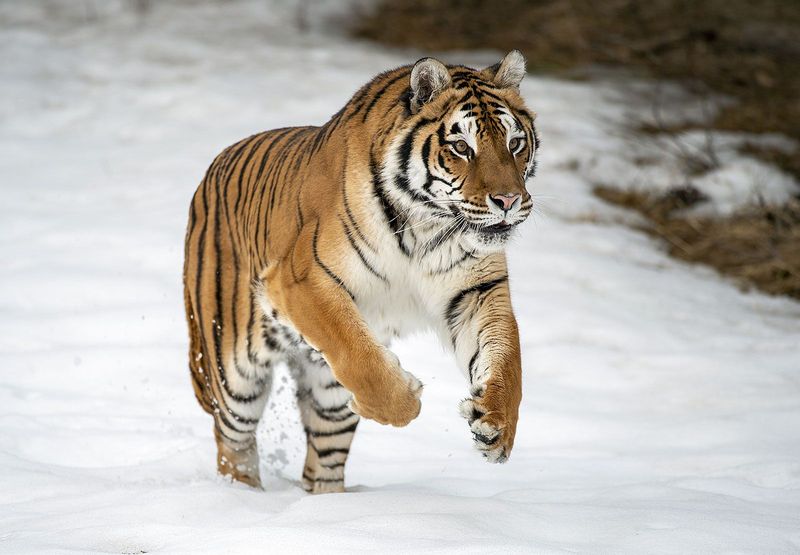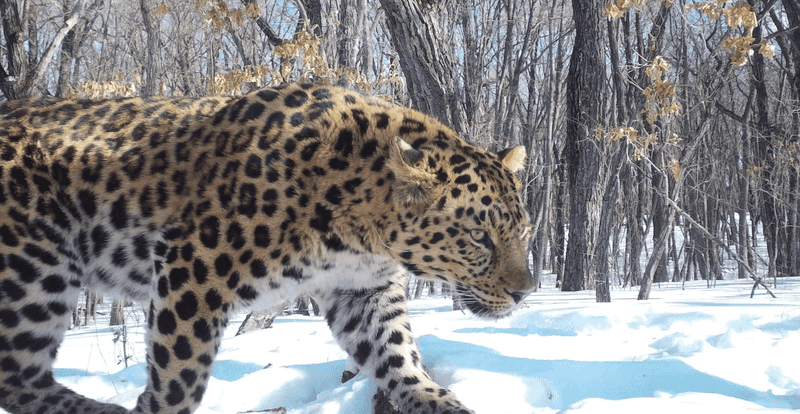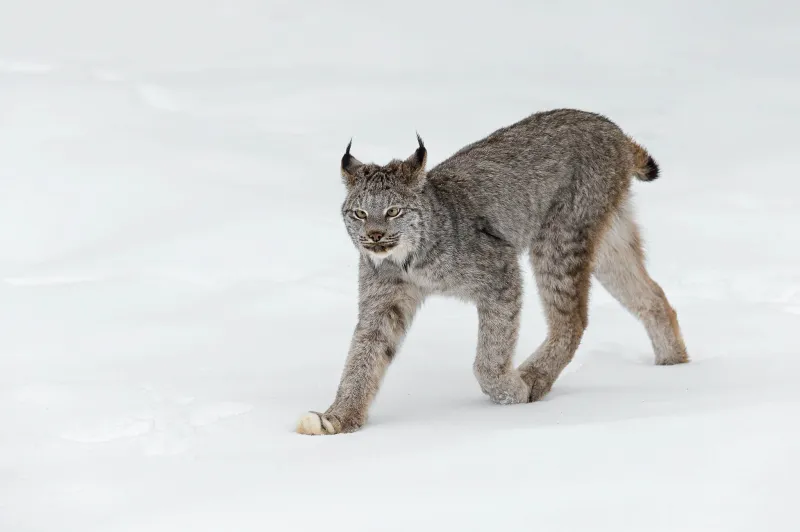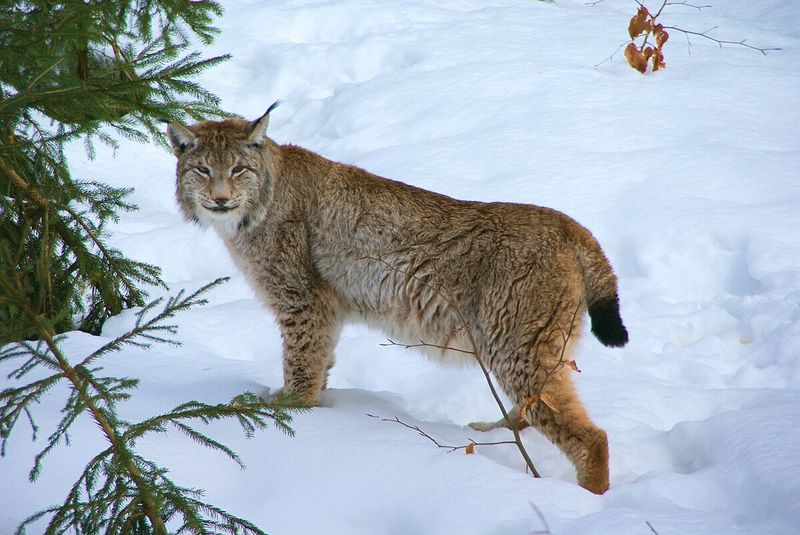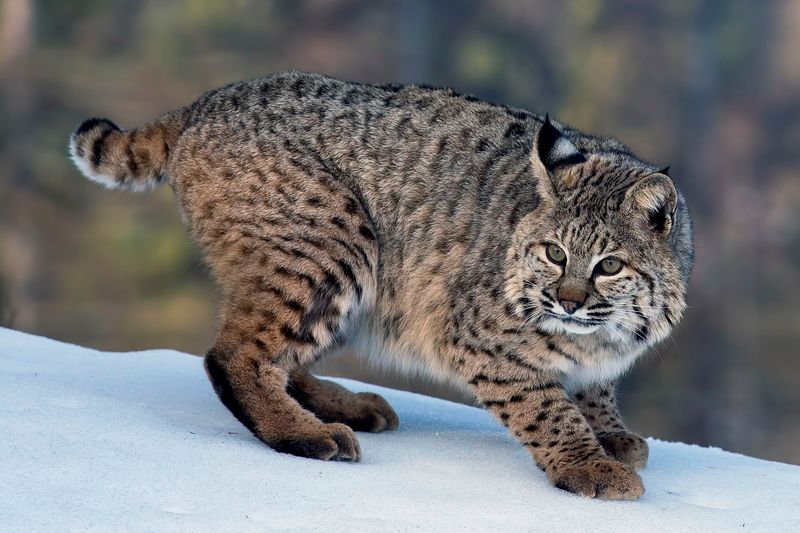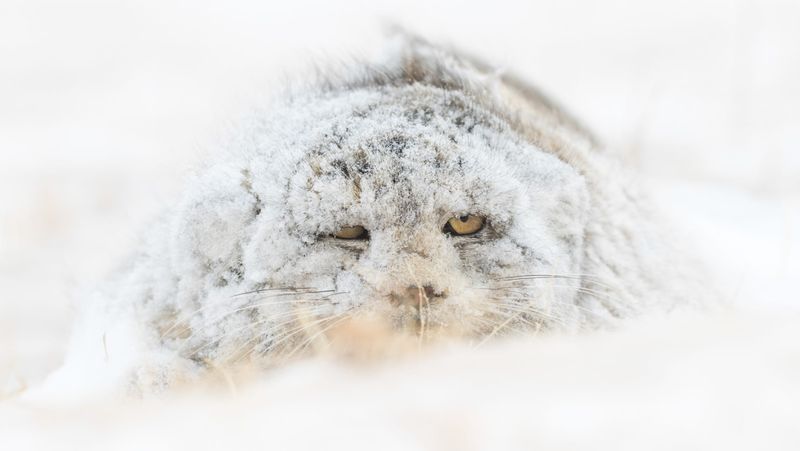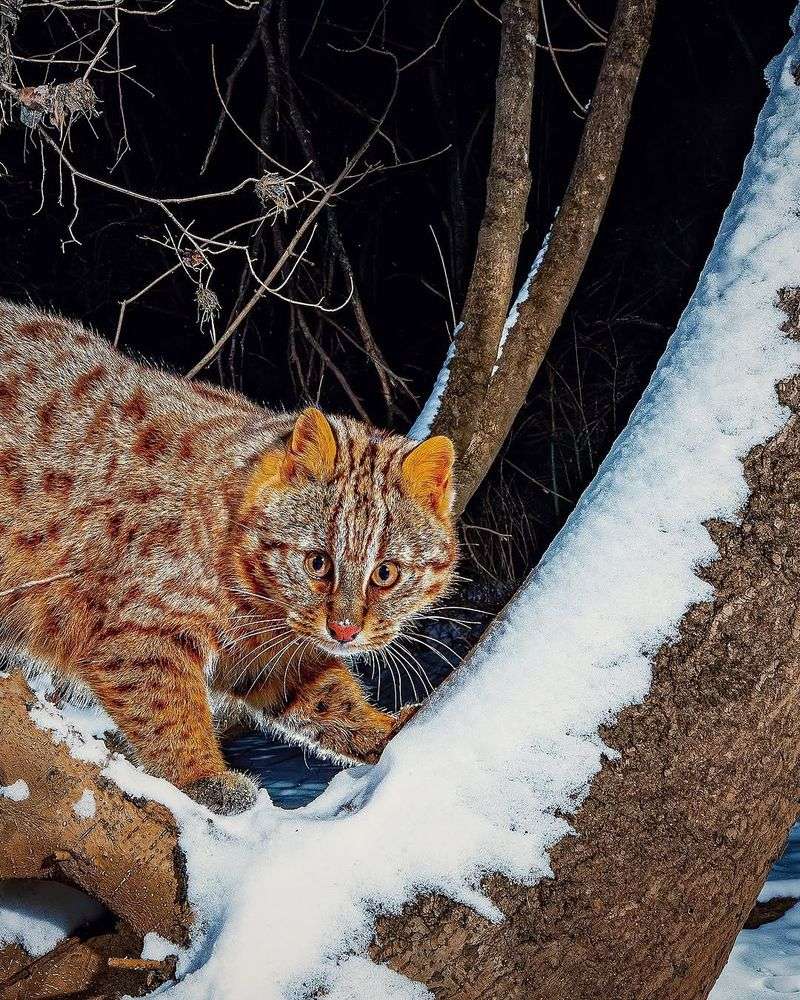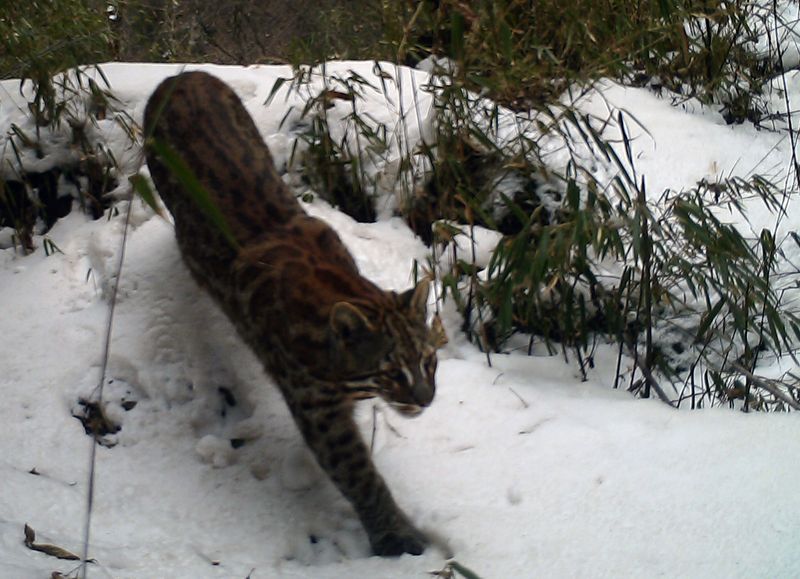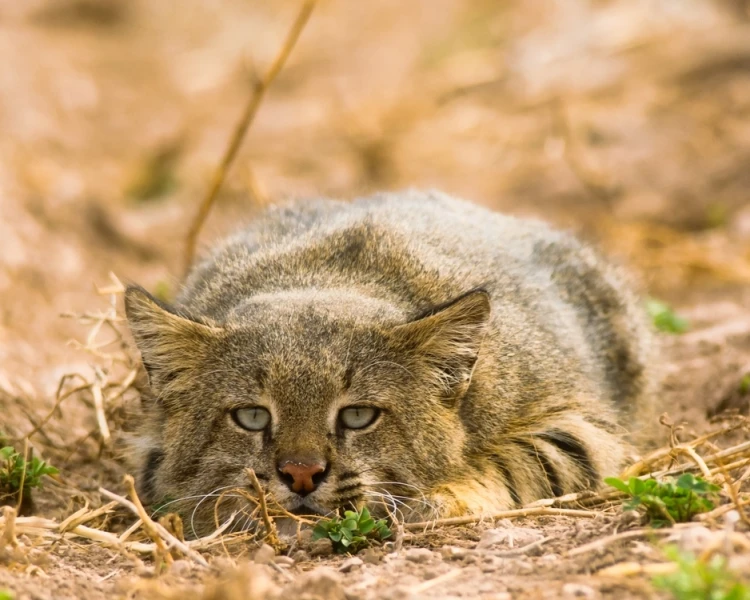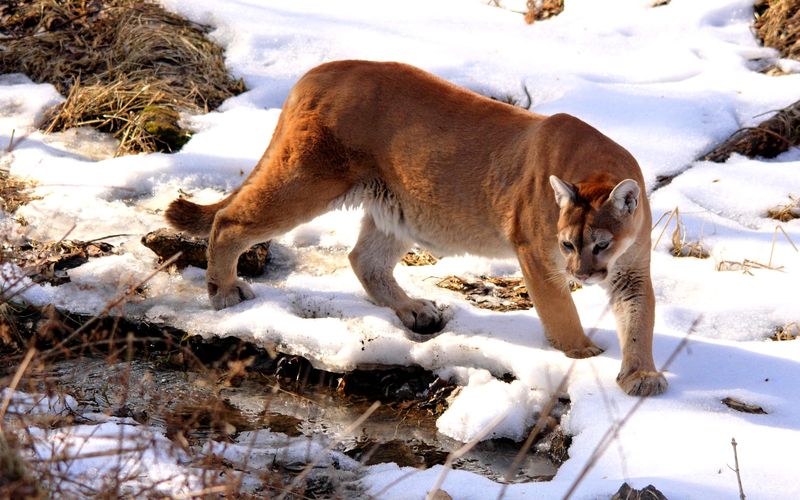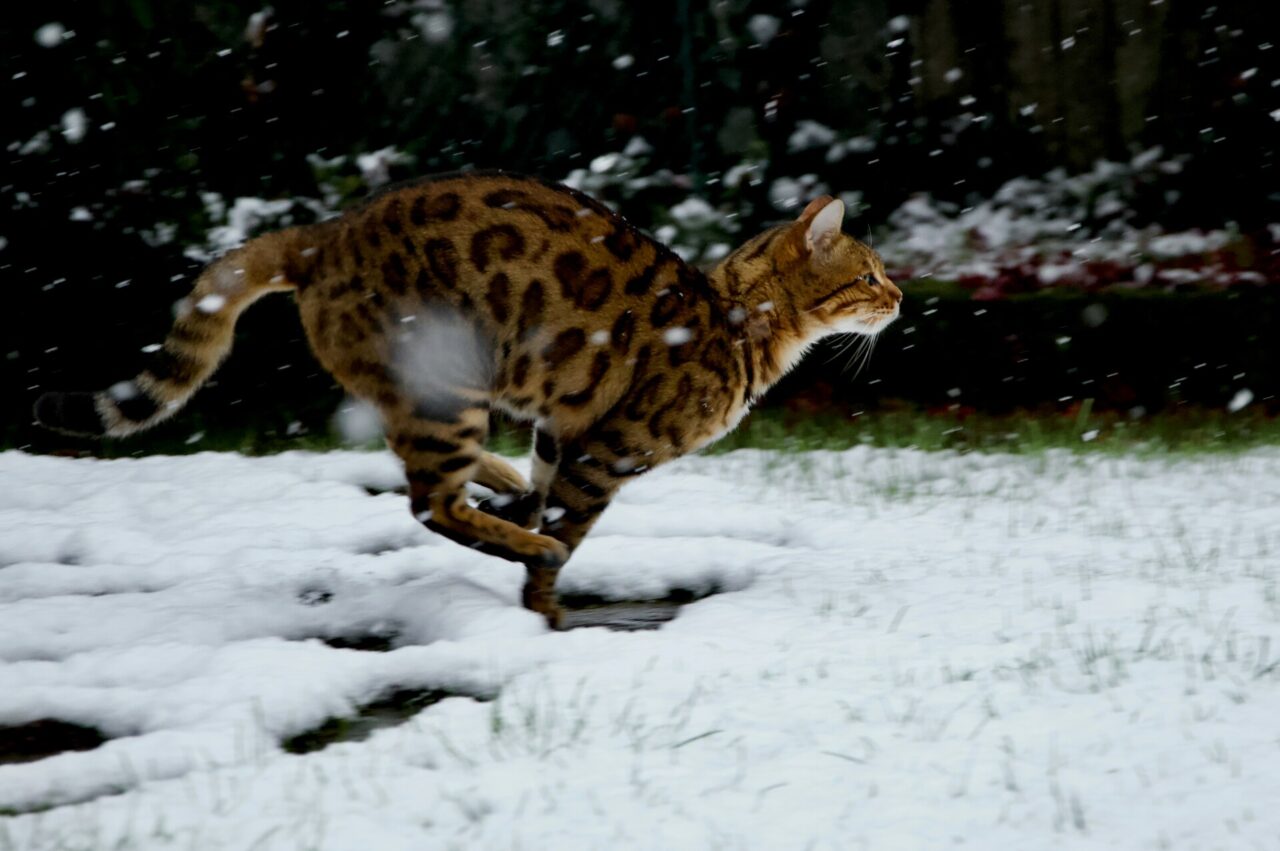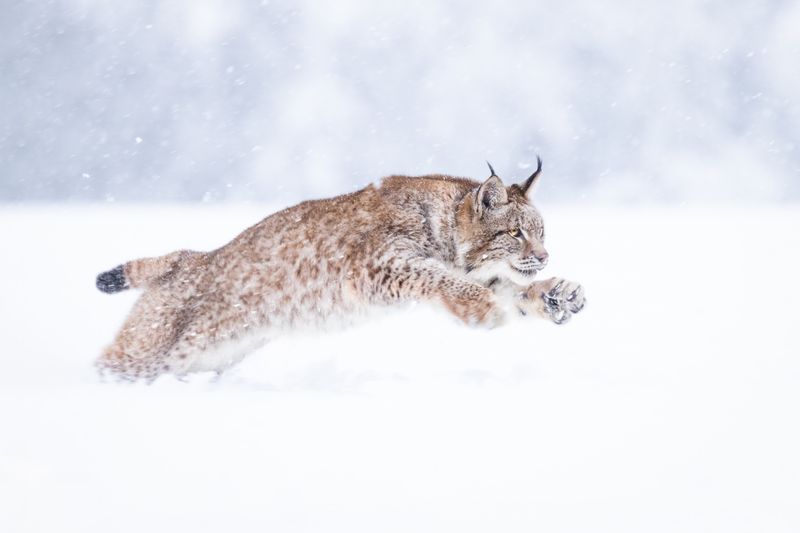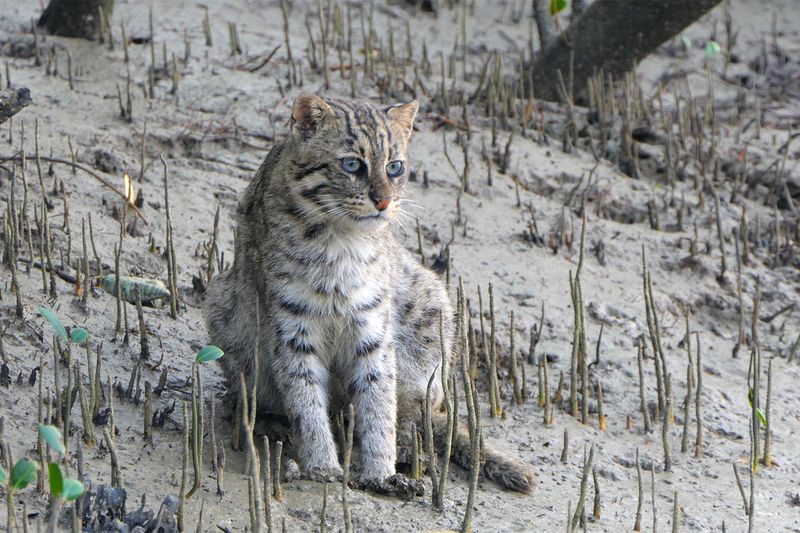📖 Table of Content:
- 1. Snow Leopard (Panthera uncia)
- 2. Siberian Tiger (Panthera tigris altaica)
- 3. Amur Leopard (Panthera pardus orientalis)
- 4. Canadian Lynx (Lynx canadensis)
- 5. Eurasian Lynx (Lynx lynx)
- 6. Bobcat (Lynx rufus)
- 7. Pallas’s Cat (Otocolobus manul)
- 8. Leopard Cat (Prionailurus bengalensis)
- 9. Asiatic Golden Cat (Catopuma temminckii)
- 10. Pampas Cat (Leopardus colocola)
- 11. Mountain Lion / Cougar (Puma concolor)
- 12. Ocelot (Leopardus pardalis – cold-adapted populations)
- 13. Iberian Lynx (Lynx pardinus)
- 14. Fishing Cat (Prionailurus viverrinus – Himalayan populations)
- 15. Marbled Cat (Pardofelis marmorata – cold region subspecies)
When we think of big cats, we often picture them stalking through dense jungles or sunbathing in the heat of the savanna. But some of the world’s most formidable feline predators thrive in the opposite extreme—frozen landscapes covered in snow and ice. From the towering peaks of the Himalayas to the icy forests of Russia, these incredible cats have evolved to survive in some of the harshest winter conditions on Earth. With thick fur, powerful limbs, and unique hunting strategies, they dominate their frigid domains.
Surviving in such environments requires incredible adaptations. Some big cats, like the Siberian tiger, grow thick, insulating coats and massive paws that act like snowshoes. Others, such as the snow leopard, rely on their agility and stealth to navigate icy cliffs and hunt in near-inhospitable conditions. Even medium-sized wild cats like the Canadian lynx and Eurasian lynx have developed specialized traits to endure extreme cold. Each of these species plays a crucial role in maintaining the delicate balance of their frozen ecosystems.
In this article, we’ll explore 16 big cats that rule the snow and ice, uncovering how they’ve adapted to their freezing environments and what makes them so remarkable. Whether they prowl the boreal forests, scale icy mountain peaks, or stalk prey in the high-altitude plains, these feline predators prove that the coldest places on Earth are far from lifeless.
1. Snow Leopard (Panthera uncia)
Elegant and elusive, the snow leopard roams the towering peaks of Central and South Asia, where temperatures plummet well below freezing. Adaptations such as a dense, woolly coat and a thick, bushy tail, which it wraps around itself like a scarf, help it withstand the bitter cold. Unlike other big cats, it has powerful hind legs that allow it to leap up to 50 feet, a necessity in its rocky, snow-covered habitat. Hunting at high altitudes where prey is scarce, it relies on stealth and patience to ambush ibex, blue sheep, and other mountain dwellers. Camouflaged perfectly against its surroundings, this cat blends seamlessly into the snow-dusted cliffs, making sightings extremely rare. Unfortunately, habitat destruction and poaching have pushed the species toward endangerment, despite conservation efforts. Snow leopards remain ghostly figures of the mountains, surviving in some of the most extreme conditions on Earth.
2. Siberian Tiger (Panthera tigris altaica)
The massive and powerful Siberian tiger is the largest of all big cats, dominating the frigid boreal forests of Russia’s Far East. Its thick, pale-orange coat, longer than that of any other tiger subspecies, acts as insulation against the brutal winter cold. Unlike its jungle-dwelling relatives, this tiger has a lower population density due to the vast, rugged terrain it inhabits. Prey is scarce in the taiga, so it covers large distances in search of wild boar, elk, and even brown bears. With paws built for traversing deep snow, it moves with surprising grace through frozen landscapes. The harsh climate hasn’t been its greatest threat—poaching and deforestation have caused severe population declines. However, strict conservation efforts have led to a slow recovery, giving hope that this mighty predator will continue ruling its icy domain.
3. Amur Leopard (Panthera pardus orientalis)
Found in the snowy forests of Russia and China, it has adapted to the cold with a thick winter coat that grows longer and denser as temperatures drop. Its striking golden fur, marked with distinctive black rosettes, provides excellent camouflage among the leafless trees and snow-covered ground. Unlike most leopards, this subspecies is built for endurance, capable of surviving in temperatures as low as -30°F. Hunting alone, it preys on hares, roe deer, and sika deer, often dragging kills into trees to keep them safe from scavengers. Habitat destruction and illegal poaching have driven it to the brink of extinction. Conservation programs are fighting to restore its population, making the Amur leopard a symbol of resilience in the frozen wilderness.
4. Canadian Lynx (Lynx canadensis)
Fluffy and fleet-footed, the Canadian lynx thrives in the snowy forests of North America, where it is built to withstand freezing temperatures. Its large, fur-covered paws act like natural snowshoes, allowing it to move effortlessly over deep snow in search of prey. Unlike most big cats, its primary food source is almost exclusively the snowshoe hare, whose population cycles dictate the lynx’s numbers. Dense fur and tufted ears help it maintain warmth in harsh winter conditions. With keen eyesight and excellent night vision, it is a master of stealth, silently stalking its prey through thick pine forests. Its ability to survive in such extreme conditions highlights its impressive adaptations. Despite habitat fragmentation, this lynx remains a resilient predator of the cold north.
5. Eurasian Lynx (Lynx lynx)
Unlike its North American cousin, it hunts a wider variety of prey, including deer, birds, and rodents. Large, powerful limbs allow it to leap great distances through dense snow, while its keen sense of hearing helps it detect the faintest movements of hidden prey. Thick, spotted fur provides insulation against the cold and helps it blend into rocky, snow-dusted landscapes. Unlike many big cats, it does not roar, instead communicating with sharp yowls and growls. Though it was once nearly wiped out in parts of Europe, conservation programs have helped reintroduce it to several regions. As an apex predator, it plays a crucial role in maintaining the balance of its snowy ecosystems.
6. Bobcat (Lynx rufus)
Typically associated with temperate regions, the adaptable bobcat also thrives in snowy habitats across North America. This resilient feline sports a spotted coat that thickens in winter, providing necessary warmth for surviving harsh conditions. The bobcat is known for its versatile hunting skills, preying on small mammals, birds, and even deer. Its keen eyesight and hearing make it a proficient hunter. Despite its solitary nature, the bobcat’s presence is essential for controlling rodent and other small animal populations. This adaptability has allowed the bobcat to maintain stable populations, even in diverse and changing environments.
7. Pallas’s Cat (Otocolobus manul)
The quirky Pallas’s cat is one of the most unusual wild cats adapted to cold, high-altitude environments. Found in the remote steppes of Central Asia, this feline is instantly recognizable due to its thick, fluffy fur and stocky build. Unlike most cats, it has a flattened face and rounded ears, which help reduce heat loss in freezing temperatures. Short, strong legs allow it to maneuver across rocky, snowy terrain with ease. A master of camouflage, it blends perfectly into its surroundings, avoiding predators and sneaking up on prey like pikas and voles. Unlike many big cats, it is not a fast runner and relies more on ambush tactics. Though it faces threats from habitat loss, its elusive nature makes it a rare and fascinating species of the frozen wilderness.
8. Leopard Cat (Prionailurus bengalensis)
Its thick winter coat provides insulation against freezing temperatures. Its small, agile body allows it to navigate snowy landscapes with ease, using stealth to hunt rodents, birds, and small mammals. Unlike larger cats, it is highly nocturnal, avoiding predators and human disturbances by hunting under the cover of darkness. In colder climates, leopard cats often take shelter in hollow logs or abandoned burrows to conserve body heat. Though not as well-known as other wild cats, it remains an important predator in maintaining the balance of its cold forest ecosystem. Climate change and habitat loss continue to threaten some northern populations, but its adaptability has helped it persist in extreme conditions.
9. Asiatic Golden Cat (Catopuma temminckii)
The Asiatic golden cat is more commonly associated with dense forests, but certain populations thrive in colder, high-altitude regions of the Himalayas. Unlike its tropical relatives, these mountain-dwelling cats have thicker fur to withstand the freezing temperatures of their rugged terrain. Their ability to blend into rocky landscapes allows them to ambush prey, including small deer, birds, and rodents. Unlike larger big cats, they are known to be highly versatile, adapting their hunting strategies based on available food sources. Unlike most cats in extreme environments, they are surprisingly diverse in coloration, ranging from golden brown to grayish-black, which helps them camouflage in different seasons. Solitary by nature, they avoid human interaction and are rarely captured on camera traps, adding to their elusive reputation. Though habitat destruction poses a threat to some populations, their adaptability gives them an advantage in surviving in diverse climates.
10. Pampas Cat (Leopardus colocola)
Typically found in South America, particularly in grasslands, dry forests, and scrublands. However, their range extends to high-altitude regions of the Andes, where they can be found in snowy environments. Pampas has been recorded at elevations above 16,000 feet, where temperatures are freezing, and prey is scarce. Its dense coat and compact body provide insulation against the harsh conditions of the Andes, where it primarily preys on small rodents and birds. Unlike many felines, Pampas cats have a somewhat rounded face and short legs, which aid them in maneuvering through rocky terrain. Their nocturnal nature allows them to avoid larger predators, hunting under the cover of darkness. Though populations vary across their range, some groups are increasingly threatened by habitat destruction and illegal hunting. Conservation efforts are underway to study their distribution and implement measures to protect this cold-adapted species.
11. Mountain Lion / Cougar (Puma concolor)
Also known as the cougar or puma, this is one of the most adaptable big cats, capable of surviving in snowy mountain regions. With its muscular build and strong hind legs, it can leap great distances, making it an agile hunter even in deep snow. Unlike pack predators, mountain lions are highly solitary, relying on stealth and ambush tactics to take down deer, elk, and smaller mammals. During harsh winters, they adjust their hunting patterns, sometimes following prey trails through the snow to conserve energy. While habitat fragmentation has posed a challenge, the species remains stable in many parts of its range due to its adaptability. As an apex predator, the mountain lion plays a crucial role in maintaining ecological balance, even in the harshest winter landscapes.
12. Ocelot (Leopardus pardalis – cold-adapted populations)
Cold-adapted and elusive, certain populations of ocelots have managed to survive in colder regions at higher elevations in the Andes and parts of North America. Their nocturnal nature allows them to hunt more effectively, preying on small mammals, birds, and reptiles even in cold environments. Unlike larger big cats, ocelots are agile climbers, often using trees to escape predators and conserve body heat. Their distinctive spotted coat provides effective camouflage against snowy backgrounds, aiding in their stealthy hunting techniques. Though typically associated with warmer regions, their ability to adapt has allowed them to persist in colder, high-altitude habitats. As habitat destruction continues to threaten their populations, conservationists are studying their resilience in these colder environments.
13. Iberian Lynx (Lynx pardinus)
Once critically endangered, the Iberian lynx has made a remarkable recovery in parts of Spain and Portugal. With its dense, spotted coat, this lynx is well-equipped to endure cold winters in its native woodlands. Its tufted ears and keen senses aid in hunting rabbits, its primary prey. Conservation efforts, including habitat restoration and prey management, have been pivotal in reviving its population. The Iberian lynx remains a symbol of successful wildlife conservation, showcasing the positive impact of dedicated efforts to protect threatened species and their habitats.
14. Fishing Cat (Prionailurus viverrinus – Himalayan populations)
Certain populations have been observed in colder, high-altitude regions of Nepal and the Himalayas. Unlike most big cats, it has partially webbed feet, allowing it to navigate icy waters and hunt fish even in freezing conditions. Its dense fur helps insulate against the cold, while its stocky body and short tail provide balance on slippery terrain. Unlike more well-known snow-dwelling felines, fishing cats have adapted to a semi-aquatic lifestyle, making them unique among their cold-environment counterparts. Though largely nocturnal, they are skilled hunters, preying on fish, amphibians, and small mammals in snowy riverbanks. Habitat loss has significantly impacted their numbers, as wetland areas continue to shrink due to human activity. Conservationists are working to better understand their distribution in these high-altitude regions and implement protective measures.
15. Marbled Cat (Pardofelis marmorata – cold region subspecies)
The marbled cat is an arboreal hunter that has been observed in colder, mountainous regions at high altitudes in the Himalayas and parts of Southeast Asia. Unlike most big cats, it spends much of its life in trees, using its long tail for balance as it moves through dense, snow-covered forests. Its thick fur and unique marbled coat pattern provide insulation and camouflage, helping it avoid predators and stalk its prey. Unlike larger felines, marbled cats primarily hunt birds, small mammals, and reptiles, using their agility to ambush from above. Their solitary nature and preference for dense vegetation make them one of the most elusive cats in cold mountain environments. Though relatively unknown, their ability to survive in such extreme habitats showcases their incredible adaptability. Conservationists continue to study these rare felines to understand their ecological role in cold, high-altitude forests.

